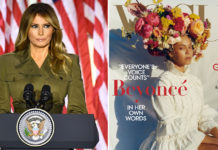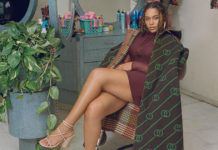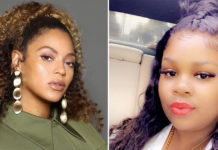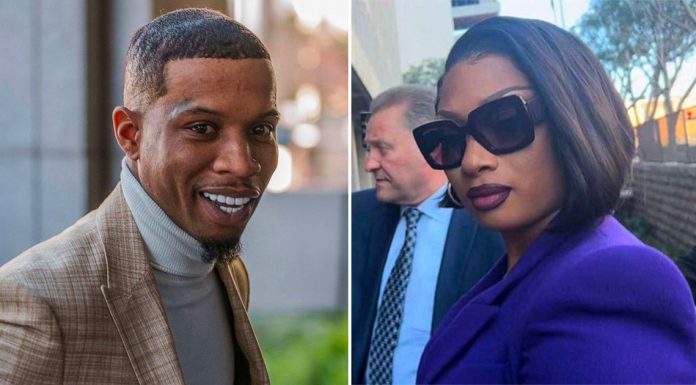
Beyoncé goes for a completely natural look for her September 2018 Vogue magazine cover. “I think it’s important for women and men to see and appreciate the beauty in their natural bodies,” she says in an essay penned for the cover story. “That’s why I stripped away the wigs and hair extensions and used little makeup for this shoot.”
Beyoncé’s Vogue spread was shot entirely by a young, black photographer. In fact, 23-year-old Tyler Mitchell is the first African American to shoot a Vogue cover in the magazine’s entire 126-year history, and Queen Bey is the reason why he’s making history. She was given full control over the direction of the shoot and its accompanying feature.
“It’s important to me that I help open doors for younger artists,” she said. “Until there is a mosaic of perspectives coming from different ethnicities behind the lens, we will continue to have a narrow approach and view of what the world actually looks like. That is why I wanted to work with this brilliant 23-year-old photographer Tyler Mitchell.”
The notoriously private entertainer, who rarely (if ever) does interviews these days, opened up about her body image, complications from her pregnancy with twins Rumi and Sir, her ancestry and legacy, Coachella, her OTRII stadium tour with husband JAY-Z, and more.
Here are some things we learned about Beyoncé from her Vogue essay:
1Beyoncé was more than 200 pounds after giving birth to the twins. She had an emergency C-Section and still has a little “FUPA” to this day, which she says she now embraces.
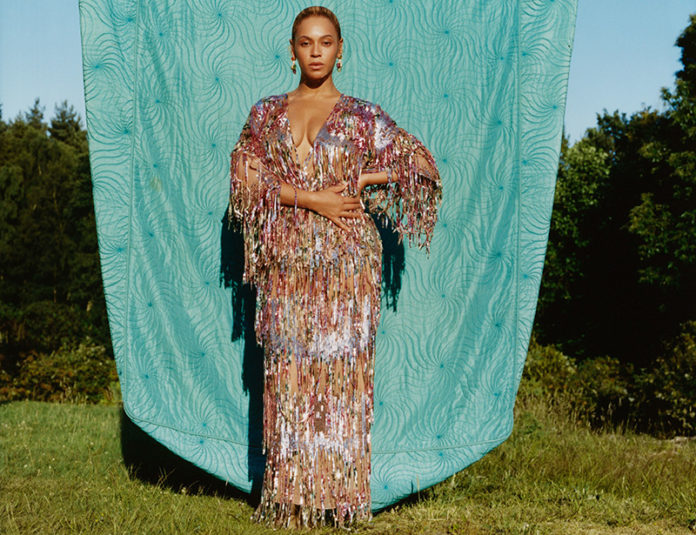
“After the birth of my first child, I believed in the things society said about how my body should look. I put pressure on myself to lose all the baby weight in three months, and scheduled a small tour to assure I would do it. Looking back, that was crazy. I was still breastfeeding when I performed the Revel shows in Atlantic City in 2012. After the twins, I approached things very differently.
“I was 218 pounds the day I gave birth to Rumi and Sir. I was swollen from toxemia and had been on bed rest for over a month. My health and my babies’ health were in danger, so I had an emergency C-section. We spent many weeks in the NICU. My husband was a soldier and such a strong support system for me. I am proud to have been a witness to his strength and evolution as a man, a best friend, and a father. I was in survival mode and did not grasp it all until months later.
“Today I have a connection to any parent who has been through such an experience. After the C-section, my core felt different. It had been major surgery. Some of your organs are shifted temporarily, and in rare cases, removed temporarily during delivery. I am not sure everyone understands that. I needed time to heal, to recover.
“During my recovery, I gave myself self-love and self-care, and I embraced being curvier. I accepted what my body wanted to be. After six months, I started preparing for Coachella. I became vegan temporarily, gave up coffee, alcohol, and all fruit drinks. But I was patient with myself and enjoyed my fuller curves. My kids and husband did, too.
“I think it’s important for women and men to see and appreciate the beauty in their natural bodies. That’s why I stripped away the wigs and hair extensions and used little makeup for this shoot.
“To this day my arms, shoulders, breasts, and thighs are fuller. I have a little mommy pouch, and I’m in no rush to get rid of it. I think it’s real. Whenever I’m ready to get a six-pack, I will go into beast zone and work my ass off until I have it. But right now, my little FUPA and I feel like we are meant to be.”
2After researching her ancestry, Beyoncé found out one of her ancestors was a slave owner who fell in love with and married a slave.
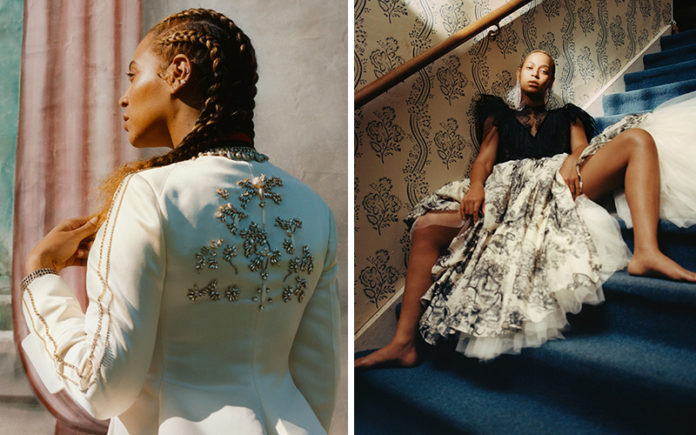
“I come from a lineage of broken male-female relationships, abuse of power, and mistrust. Only when I saw that clearly was I able to resolve those conflicts in my own relationship. Connecting to the past and knowing our history makes us both bruised and beautiful.
“I researched my ancestry recently and learned that I come from a slave owner who fell in love with and married a slave. I had to process that revelation over time. I questioned what it meant and tried to put it into perspective. I now believe it’s why God blessed me with my twins. Male and female energy was able to coexist and grow in my blood for the first time. I pray that I am able to break the generational curses in my family and that my children will have less complicated lives.”
3Beyoncé came up with the theme of her Coachella performance one day while putting Rumi to sleep and she started singing the black national anthem “Lift Every Voice and Sing.”
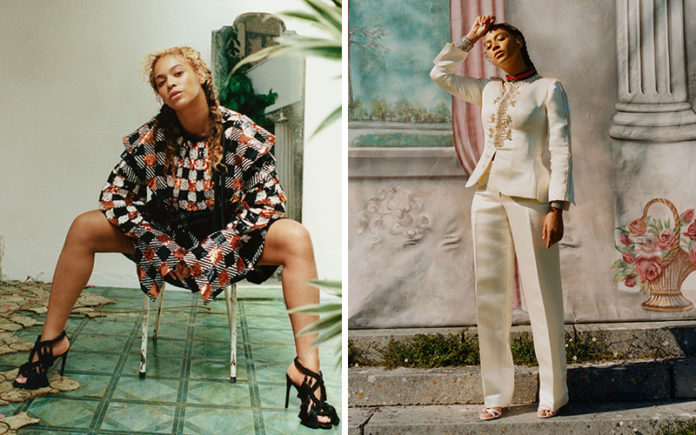
“I had a clear vision for Coachella. I was so specific because I’d seen it, I’d heard it, and it was already written inside of me. One day I was randomly singing the black national anthem to Rumi while putting her to sleep. I started humming it to her every day. In the show at the time I was working on a version of the anthem with these dark minor chords and stomps and belts and screams.
“After a few days of humming the anthem, I realized I had the melody wrong. I was singing the wrong anthem. One of the most rewarding parts of the show was making that change. I swear I felt pure joy shining down on us. I know that most of the young people on the stage and in the audience did not know the history of the black national anthem before Coachella. But they understood the feeling it gave them.
“It was a celebration of all the people who sacrificed more than we could ever imagine, who moved the world forward so that it could welcome a woman of color to headline such a festival.”
4Performing in Berlin at the site of the 1936 Olympics for the “On The Run II” stadium tour was a memorable moment for Beyoncé.

“One of the most memorable moments for me on the On the Run II tour was the Berlin show at Olympiastadion, the site of the 1936 Olympics. This is a site that was used to promote the rhetoric of hate, racism, and divisiveness, and it is the place where Jesse Owens won four gold medals, destroying the myth of white supremacy.
“Less than 90 years later, two black people performed there to a packed, sold-out stadium. When Jay and I sang our final song, we saw everyone smiling, holding hands, kissing, and full of love. To see such human growth and connection—I live for those moments.”
5Beyoncé says she’s deliberate about how she presents herself to the world, and she wants to give her children the freedom to whatever they want to do in life.
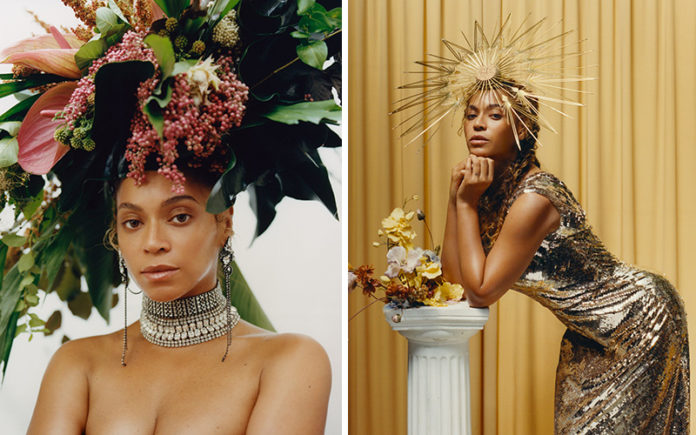
“My mother taught me the importance not just of being seen but of seeing myself. As the mother of two girls, it’s important to me that they see themselves too—in books, films, and on runways. It’s important to me that they see themselves as CEOs, as bosses, and that they know they can write the script for their own lives—that they can speak their minds and they have no ceiling. They don’t have to be a certain type or fit into a specific category. They don’t have to be politically correct, as long as they’re authentic, respectful, compassionate, and empathetic. They can explore any religion, fall in love with any race, and love who they want to love.
“I want the same things for my son. I want him to know that he can be strong and brave but that he can also be sensitive and kind. I want my son to have a high emotional IQ where he is free to be caring, truthful, and honest. It’s everything a woman wants in a man, and yet we don’t teach it to our boys.
“I hope to teach my son not to fall victim to what the internet says he should be or how he should love. I want to create better representations for him so he is allowed to reach his full potential as a man, and to teach him that the real magic he possesses in the world is the power to affirm his own existence.
“I’m in a place of gratitude right now. I am accepting of who I am. I will continue to explore every inch of my soul and every part of my artistry. I want to learn more, teach more, and live in full. I’ve worked long and hard to be able to get to a place where I can choose to surround myself with what fulfills and inspires me.”
For more from Beyoncé, pick up Vogue’s September 2018 issue—available for pre-order via Amazon today (Aug. 6), and on newsstands in L.A. and New York City on Tuesday, August 14th, and nationwide on Tuesday, August 21st.

